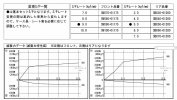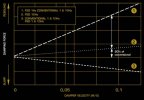MeisterR
Member
- Joined
- Feb 3, 2009
- Messages
- 321
Personally, I think you are looking into it too much.
When it comes down to suspension, there are lots of different category and factors... and most of them are COST related.
I personally put the Ohlins DFV as the "Gold Standard" bench mark for high end suspension.
A nice degressive curved damper for compliant ride quality, dual perch design for easy ride height adjustments and spring rate control, and Mono-Tube Damper construction.
Those are the basic of what a good road suspension is about, and all the other 2-way, 3-way, blah blah blah are just extra fog.
If you are talking about high end suspension and you cannot show the above, then you are missing the basic of what a good sport suspension is about.
Now, granted we are talking about high end suspension here which are normally at least £2000 and on.
And at that price range, there are quite a bit of expectation and hence why I expect quite a lot.
When it comes down to suspension, there are lots of different category and factors... and most of them are COST related.
I personally put the Ohlins DFV as the "Gold Standard" bench mark for high end suspension.
A nice degressive curved damper for compliant ride quality, dual perch design for easy ride height adjustments and spring rate control, and Mono-Tube Damper construction.
Those are the basic of what a good road suspension is about, and all the other 2-way, 3-way, blah blah blah are just extra fog.
If you are talking about high end suspension and you cannot show the above, then you are missing the basic of what a good sport suspension is about.
Now, granted we are talking about high end suspension here which are normally at least £2000 and on.
And at that price range, there are quite a bit of expectation and hence why I expect quite a lot.


